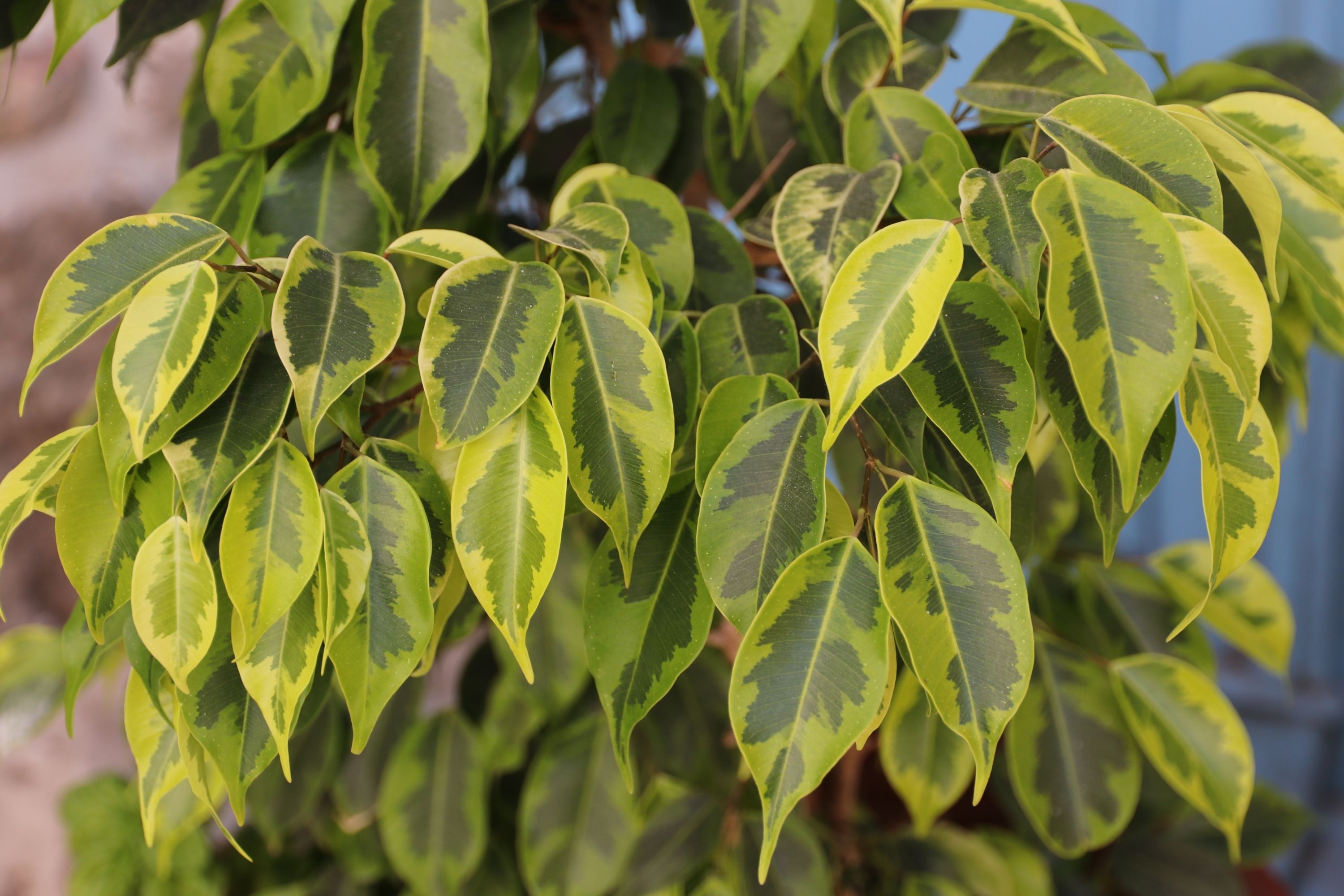Weeping fig
(Ficus benjamina)

Description
Ficus benjamina, commonly known as the weeping fig, is a popular plant species that belongs to the family Moraceae. It is native to Southeast Asia and is commonly found in tropical and subtropical regions. The Ficus benjamina is a tree that can grow up to 30 meters tall and is known for its graceful, weeping branches and glossy, dark-green leaves. Taxonomy and Nomenclature Ficus benjamina was first described by Carl Linnaeus in 1767 in his book, "Systema Naturae." The plant was given its scientific name based on the fact that it was commonly found near the tomb of Benjamin Franklin in Philadelphia. The genus Ficus has over 800 species, many of which are found in tropical and subtropical regions. Ficus benjamina is one of the most widely cultivated species in the genus Ficus. Appearance The Ficus benjamina is a beautiful, evergreen tree that can grow up to 30 meters tall in its native habitat. In cultivation, however, it is usually grown as a smaller, more manageable tree or shrub. The plant has a single, straight trunk and a dense, symmetrical canopy. Its leaves are glossy, dark green, and oval-shaped with pointed tips. The leaves are approximately 5 to 10 cm long and 2 to 5 cm wide. The plant also produces small, greenish-yellow flowers that are not very noticeable. Cultivation and Propagation Ficus benjamina is a popular ornamental plant that is often used for interior landscaping. It is relatively easy to cultivate and can be propagated through stem cuttings or air layering. The plant prefers bright, indirect light and moderate to high humidity. It should be watered regularly but not over-watered, as this can lead to root rot. The plant also prefers well-draining soil and should be fertilized regularly during the growing season. Uses Ficus benjamina is a popular plant for interior landscaping due to its beautiful, weeping branches and glossy, dark-green leaves. It is often used in office buildings, shopping centers, and other public spaces. The plant is also commonly used as a bonsai tree due to its beautiful, natural shape and small size. In some parts of the world, the plant is also used for medicinal purposes. Potential Health Benefits Ficus benjamina has been used for medicinal purposes in some cultures for centuries. The plant contains several compounds that are believed to have anti-inflammatory, anti-cancer, and anti-diabetic properties. Some studies have also suggested that the plant may have anti-bacterial and anti-fungal properties. However, it is important to note that more research is needed to fully understand the potential health benefits of Ficus benjamina. It is not recommended to consume or use the plant for medicinal purposes without first consulting a healthcare professional. Potential Risks While Ficus benjamina is generally considered safe for most people, it can cause allergic reactions in some individuals. The plant produces a milky sap that can cause skin irritation and itching. It can also cause respiratory problems in some individuals, especially those with asthma or other respiratory conditions. Conclusion Ficus benjamina is a beautiful, evergreen tree that is widely cultivated for ornamental purposes. It is relatively easy to grow and maintain, making it a popular choice for interior landscaping. While the plant has potential health benefits, more research is needed to fully understand its properties. It is important to handle the plant with care and to be aware of potential allergic reactions or respiratory problems.
Taxonomic tree:







